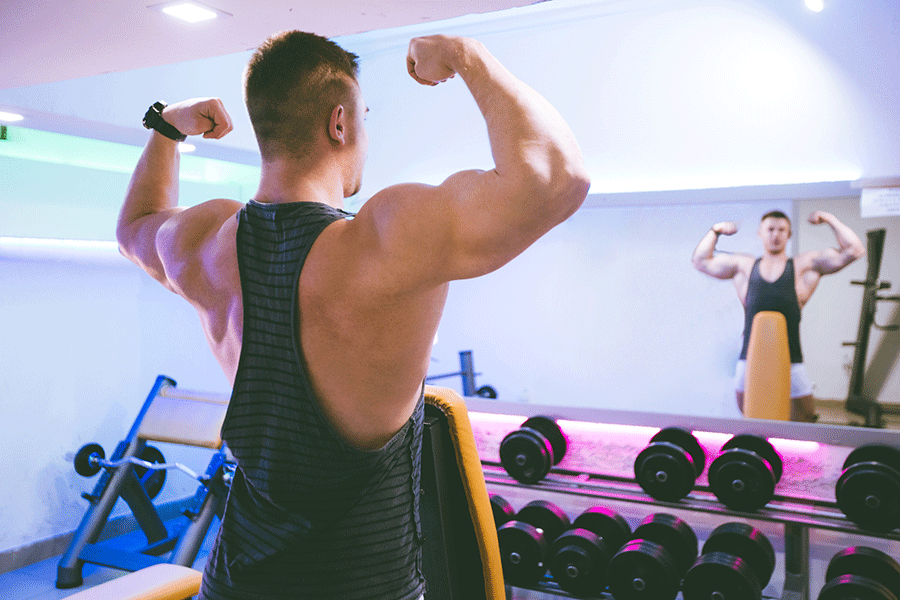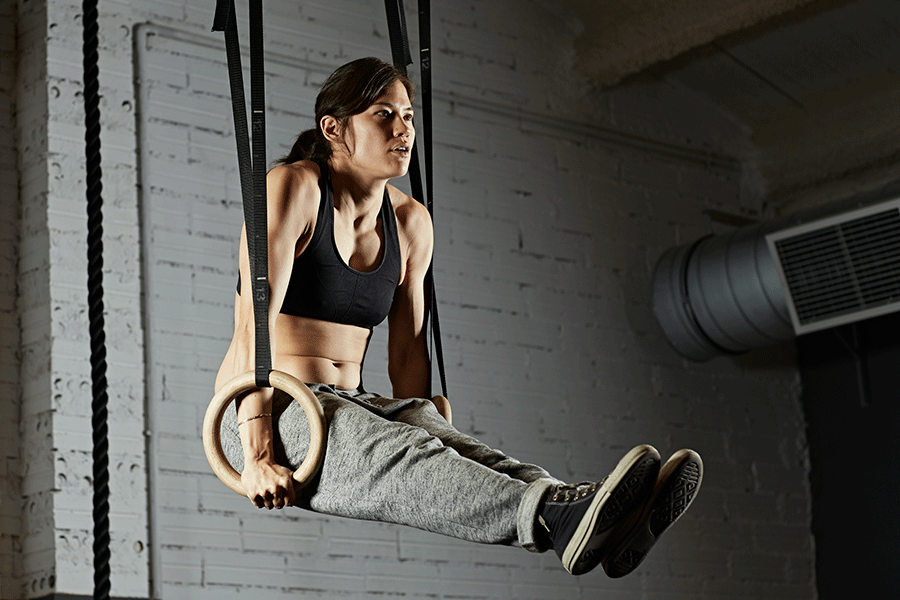Finding the balance between parkour and pumping iron
Lorraine Glass’s favourite athletes are unlike what many of us think of as athletes. They don’t compete in major leagues; they don’t run 100 metres in less than 10 seconds; they don’t beat each up in an octagonal ring.
They just move – but they move in remarkable ways. When Glass thinks of strength, stamina and coordination, she thinks first of hip-hop dancers and parkour traceurs. “They have it all,” says the Personal Fitness Trainer instructor.
Their creativity of movement, whether it involves breaking and popping on dancefloors or vaulting and rolling over cityscapes, engages the whole body, Glass points out. That means working the brain, heart, lungs and muscles simultaneously, and more so than the piston repetition of, say, bench press.
She sees the quality of interaction of those systems – developed through what’s known as functional training – as the foundation of everything we do. Think of reaching for a jar on a high shelf, says Glass. “[It] takes from your toe to the tip of your finger to accomplish that movement.” It’s like parkour for the rest of us.
Each year, however, a familiar scenario plays out: Gym membership spikes in January, followed by a mass giving up, sometimes as much as 50%, as the year progresses.
As an instructor with NAIT’s program since its inception more than two decades ago, Glass believes there’s a place for cardio and resistance training. But she worries when fitness culture focuses on them so narrowly – especially when more practical and, given the video below, fun alternatives exist.
If life involves the whole body, “Why train the segments of the system individually?” she says.
Looking beyond looks
 One reason is obvious: “Aesthetics. You can’t ignore it,” says Glass. For some people, “It’s a reflection of the way that you think of yourself.” Build up muscle, and self-esteem may follow.
One reason is obvious: “Aesthetics. You can’t ignore it,” says Glass. For some people, “It’s a reflection of the way that you think of yourself.” Build up muscle, and self-esteem may follow.
For years, fitness has moved toward such specialization. If not typified by pumping iron, it has been folded into activities such as long-distance running or cycling, which Glass sees as, essentially, protracted sets of reps.
As an industry, “It takes a while to move away from something so traditional as resistance or cardio [training],” she says.
It took Brittany Uchach (Personal Fitness Trainer ’05) time to make that move as well. As an Edmonton-based, independent exercise specialist (a term she prefers to “trainer”), she found that clients early in her career weren’t getting results from cardio and weights.
“I started thinking, ‘OK, what do people really want? How can I bring the most value to them?’” says Uchach. “So I started programming more movement-based stuff. And, sure enough, people started getting results. They started enjoying it and it was a lot less overwhelming.”
"I started programming more movement-based stuff. And people started getting results."
Today, Uchach tailors her training to lifestyles, and develops functional programs that, in contrast to resistance training,
- are multi-planar rather than uni-planar
- are focused on acceleration or deceleration rather than a constant tempo
- require stability and balance during movement, developing neural pathways associated with movement, which weight machines tend to discourage
- encourage the coordination of many muscles, instead of isolating them
If a client struggles with hip issues, for example, Uchach might have him work on hip mobility and leg strength:
If another wants to improve her golf swing, she might recommend an exercise focused on the posterior sling system, which links one latissimus dorsi (spanning a side of the mid to lower back) to the opposite gluteus maximus (the butt):
Uchach is quick to point out that this kind of training isn’t just for people dealing with pain or looking to zero in on a functional yet specialized movement. Everyone, after all, has their own jar they want to reach.
“Who doesn’t want to live a better life?” she says. “Who doesn’t want to make sure that they stay pain free? Who doesn’t want to optimize their movement and in 20 years be able to bend down and play with their grandkids?”
How to find functional training
 Calisthenic-style exercises may be one way to bring more movement to your exercise routine, suggests Glass. A precursor of modern functional training, the method originated in ancient Greece, when athletes used their bodyweight to improve gross motor skills as much as strength and endurance.
Calisthenic-style exercises may be one way to bring more movement to your exercise routine, suggests Glass. A precursor of modern functional training, the method originated in ancient Greece, when athletes used their bodyweight to improve gross motor skills as much as strength and endurance.
Uchach feels that, in a pinch, a movement-based group session will also do. “Any fitness class is better than none.” She recommends ViPR classes, which are designed to move the body through motions mimicking real-life tasks while carrying a load.
“Any fitness class is better than none.”
That said, a class can’t often match movements to lifestyles and goals. For that, “You’ve got to find a fitness professional who specializes in [functional training].”
If an online search for a functional fitness specialist doesn’t land you a match, check out the staff and facilities at your local gym. Glass recommends coming prepared with three questions:
- What equipment do you have? Machines that facilitate movements in a single plane or direction won’t cut it. Glass says to look for handheld weights, kettlebells, bands, or systems that use of bodyweight.
- Do you offer group or individual programming? There are benefits to both, says Glass. One-on-one training is customized. “The advantage of the group is you have a [support] network.”
- What is your level of certification? “Just because you can squat a lot of weight doesn’t mean you can teach everything,” says Glass. Check into a trainer’s credentials and experience with functional training.
No matter what form the training takes, the outcome should be the same: an improved ability to meet the demands of the day, rather than 12 reps of a motion you’ll never do outside of a gym.
“The goal is to make someone strong enough and confident enough to do all the things they want to do,” says Glass. “It’s all about movement.”